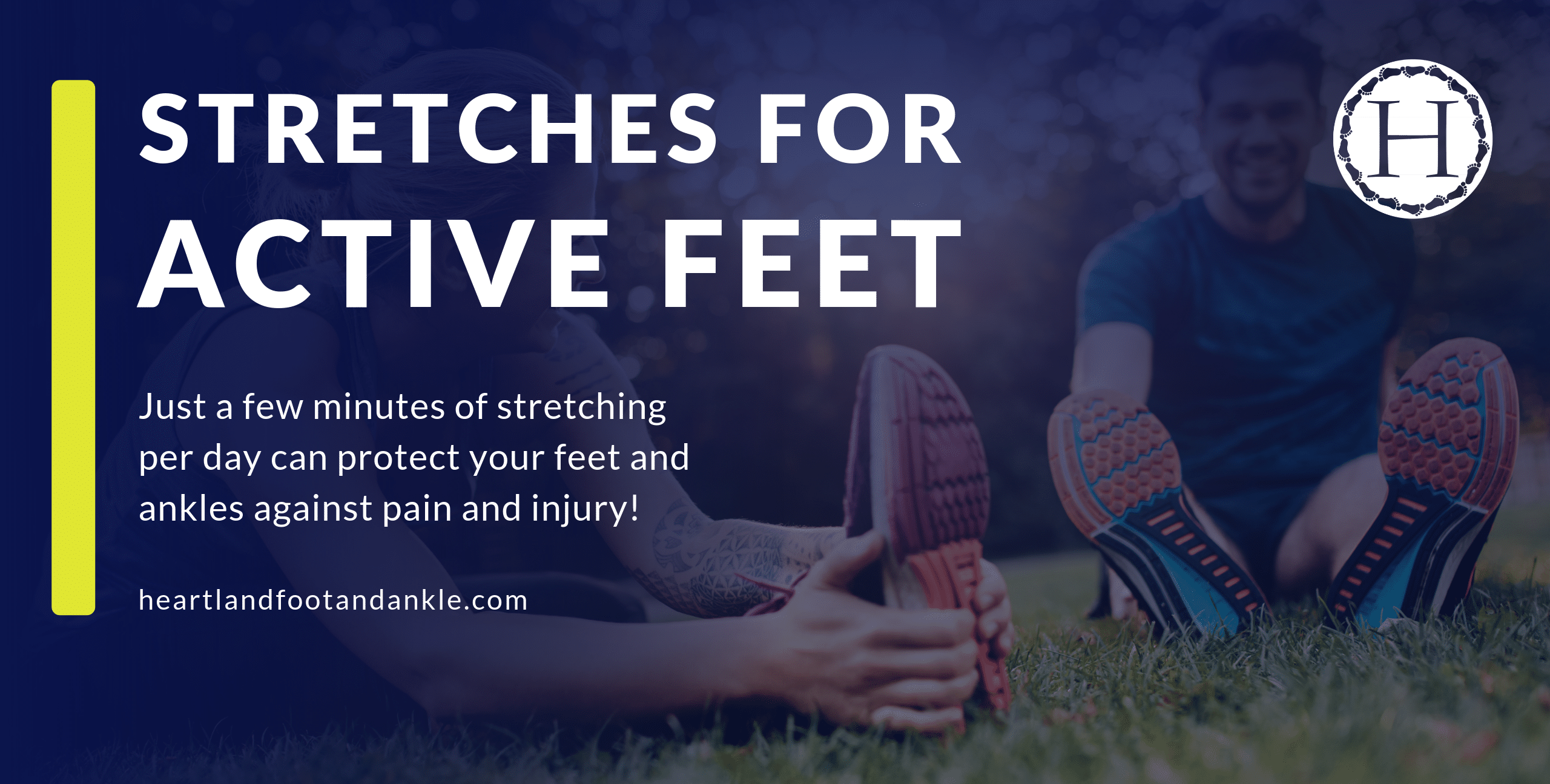Don’t Forget to Stretch Your Active Feet!
Question for you:
For about 5-10 minutes before you go on a run or start hitting tennis balls with your partner, do you always remember to stretch out your body—including your legs, ankles and feet?
Be honest. A lot of us don’t.
And that’s to our detriment. We know you want to “skip to the good part,” but stretching really needs to be an important part of your routine no matter what you like to do for fun. Stretching regularly throughout the day, as well as before and after workouts or sports provides many benefits—not the least of which is sparing you from preventable foot and ankle injuries!
The Benefits of Stretching
It might be hard to believe that just a few minutes of stretching here and there could really make that much of a difference. But in fact, the benefits to your health can be quite significant.
One of the biggest, of course, is injury resistance. When you stretch regularly, you help keep your muscles, tendons and ligaments strong and flexible, and maximize the healthy range of motion in your joints. Strong, flexible, coordinated muscles are in general better able to handle the impact forces of activity without tearing, breaking, or becoming sore.
And when you stretch before exercise specifically, you help work out any temporary tightness that may have developed (say from sitting most of the day), as well as increase blood flow to the area. This is important, since cold and tight muscles that are suddenly called upon for strenuous activity are much more likely to be damaged from the sudden, uncontrolled stretching of athletic competition. Taking a few minutes to get them up to speed in a controlled manner could have prevented the problem!
Other stretching benefits include:
- Improving your balance. This is obviously good news for older adults who might be at greater risk of falls. But it’s just as beneficial for athletes, since better balance means better performance (in things like running, changing directions, accelerating, tackling, etc.)
- Improving your posture. This can help eliminate back pain, improve your training form, and help you get more out of your exercise, too!
- Stress relief and relaxation. Tight, painful muscles mean tension—both physical and mental. Stretching works out those knots and gets blood flowing to your sore muscles and your brain. That could mean less stress, better mood, and better sleep in addition to reduced physical discomfort!

A Few Stretches for Feet and Ankles
Although there are almost as many different stretching routines as there are athletes out there—and we encourage you to experiment with stretches that you find most beneficial and fun—here are a few that our office often recommends:
- The wall push-up. Face a wall from three feet away, with your feet flat on the floor and knees locked. (If you’re outside, you can do this with a tree, or any vertical object sturdy enough to support your weight without tipping over.) Lean into the wall, keeping your feet flat on the ground. You should feel the stretch in your calves. Hold for 10 seconds (do not bounce) and slowly push yourself back up. Repeat five times.
- The standing calf stretch. Face a wall and place your hands straight out in front of you so that palms are touching the wall. While keeping your “back” knee locked and heel on the floor, step forward with the other leg and lean with your hips down and toward the wall. (You should feel the stretch in the calf of your back leg.) Hold for 10 seconds, and do five reps. Switch legs and repeat.
- The hamstring stretch. Put your foot, with knee straight out and locked, onto a sturdy chair or table. Keep the other leg straight with a locked knee. Slowly lower your head toward the raised knee until you feel the stretch. Hold for 10 counts, then relax. Repeat five times and switch legs.
- The lower back stretch. In a standing position, keep both legs straight with feet spread slightly. Bend at your waist and try to get your palms flat on the floor (or as close as you can), without bending your knees. Hold for 10 seconds, and repeat 10 times. Do not bounce—always move slowly and smoothly up and down.
Check in with Your Doctor If You’re Experiencing Pain
“No pain, no gain” may be a popular saying with athletes and coaches, but the truth is that it’s pretty lousy advice!
It’s normal to feel a little achy or sore after a workout, but if you have a good training program with appropriate rest days built in, you shouldn’t be in constant pain that limits your activities. If you are, that means something is definitely wrong and you need to get it checked out!
At Heartland Foot & Ankle, we pride ourselves on providing exceptional foot and ankle care to athletes of all ages and ability levels! If you’re recently sustained a sports injury or have nagging pain, we can help. We’ll make sure you get the advanced, effective care you need—plus lots of helpful advice on which stretches to perform, what shoes to buy, and other tips to stop the next injury from happening in the first place!
To schedule an appointment with us in Bloomington, IL, please call (309) 661-9975 today.
